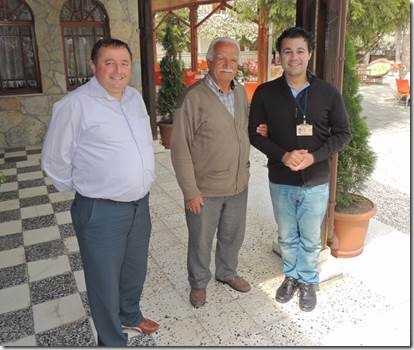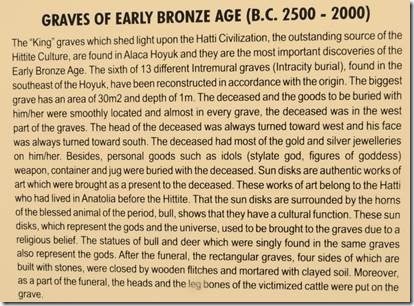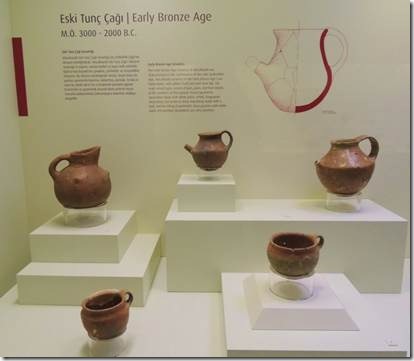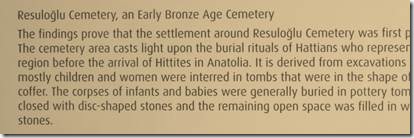Merhaba,
Yesterday afternoon DoraMac was moved forward along the dock to accommodate the “stage” being set up for an evening performance. I can’t tell you what or why about the performance, only that it was very VERY loud. The base drum made DoraMac vibrate! The stage was set up yesterday afternoon and this morning it’s all been dismantled and all traces cleaned up. I really liked the music, even the songs sung in Russian or Swedish depending on whom you ask. (Colin said Russian, Ned Swedish.) There was a black singing group from England that Colin knew. I’d have really liked it all at many decibels lower and no, NO base guitar. It probably didn’t help that the big boat next to us was causing the music to bounce back to us instead of just going past us and out of the marina. The “season” has begun here in Netsel Marina.
Ru
Meanwhile, back with the Hittites…..
Hittite Day 1 Part 3; Lunch, the Sphinx Gate, a Hittite dam, and the Çorum Museum
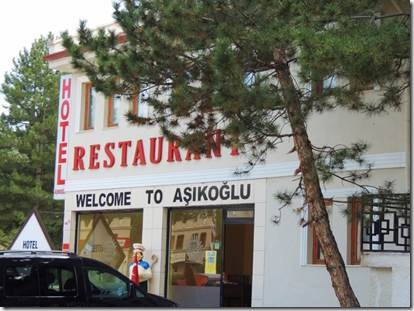
This restaurant in Boḡazkale had an interesting name. You can translate Aşıkoğlu as “son of the lover or really lover son .” Aşık translates as lover, wanderer or bard and when you add oḡlu it means son. |
| Most folks just ordered the very tasty lentil soup or salad as we’d made a “comfort stop” that morning and loaded up on Turkish trail mix, dried fruit and chocolate: or ice cream! My snack was two scoops of kiwi flavored green ice cream (one tiny cone and then a second tiny cone,) and a small bag of trail mix which lasted for several days. It had roasted chickpeas in the mix as the area is quite famous for that treat. Everyone passed around their snacks during our long drives and I noticed that mostly nobody other than me liked the roasted chickpeas. I’ll write about them in another email when I have some to actually show you.
Lunchtime celebrities. Ayden and Taṣ with this gentleman who was the only undefeated competitive wrestler from the region. |
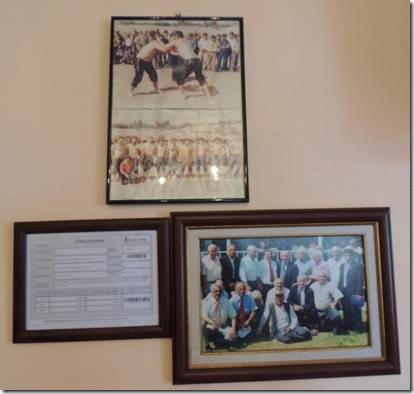
Photos were displayed on the restaurant wall. |
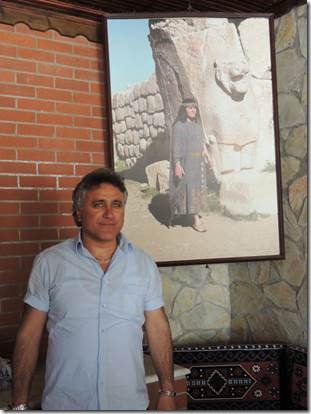
The restaurant manager had once acted the part of a Hittite King in a National Geographic documentary. |
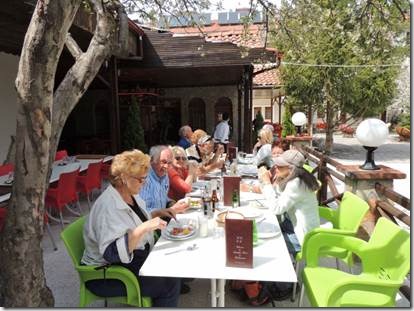
Lunch was fun! |
| After lunch some folks went to the small local museum for a quick look around. I opted just to go for a walk along the main town road. Then it was time to re-board our minibus for our next destination: the Sphinx Gate and the small, but lovely museum of Alacahὄyὕk. |
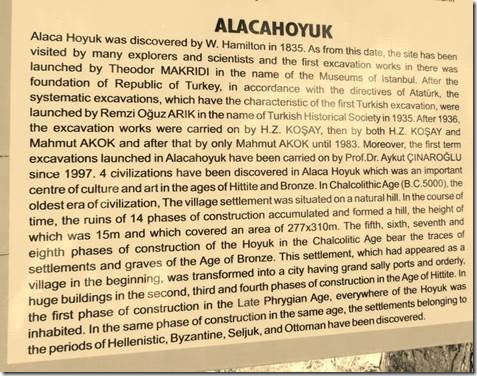 |
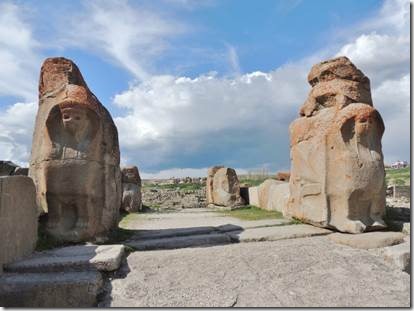
Standing in the ancient past…. The replica of the Sphinx Gate: the originals are in The Museum of Anatolian Civilizations in Ankara. But even the replicas were striking in the setting. “The most important of the extant remains of the Hittites at Alacahoyuk is the Sphinx Gate, which marked the entrance to the Bronze Age city. This dates to the Hittite Empire period of 1450-1180 B.C. The original orthostats that decorated the city wall are in the Anatolian Civilizations Museum in Ankara, but they have been replaced at the site by cast replicas.” http://www.travellinkturkey.com/hittites-alacahoyuk.html |
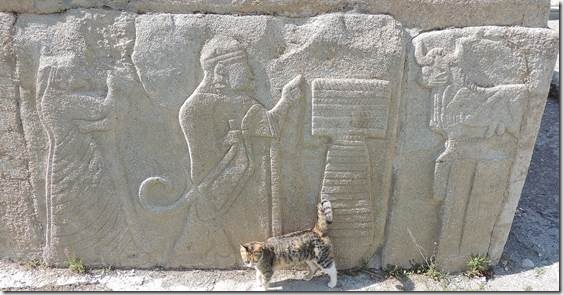
Bas Relief with cat “These orthostats, from the left side of the entrance, bear depictions of a king and his queen worshipping the sacred bull, sacrificial animals, priests, jugglers, a sword swallower, and a man climbing a ladder that is standing in space, and an unfinished relief that may possibly have been intended as a chariot scene. On the right side of the entrance gate is likely a representation of the sun goddess Arinna, who was the primary female deity of the Hittites.” http://www.travellinkturkey.com/hittites-alacahoyuk.html The cat followed us around the site meowing finally allowing me to give it a few pats just before we entered the museum. |
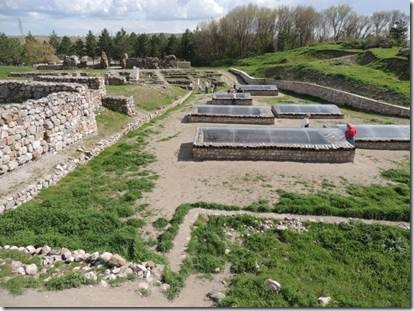
Burial sites “The first excavations at Alacahoyuk were started in 1861 by a French archeologist. Georges Perrot. More extensive work was initiated by the Turkish Historical Association in 1935 and continued until 1948. While excavating in the deeper levels of the city-mound at Alacahoyuk, a group of graves was found by Turkish archaeologists. They are thought to be of a local ruling family of the Early Bronze Age period, buried among the paraphernalia of their funerary ceremonies, and accompanied by their private possessions. The interments had been made over a period of several generations. Some of the graves contained single burials, while others held the remains of both a man and a woman buried on separate occasions. In the graves, the men were buried with their weapons and women with jewelry, ornaments, and toiletries. Both were accompanied by utensils and eating vessels that were made of precious metals. An extraordinary find was a dagger in the shape of a crescent, made entirely of iron. This metal, very rarely used during this early period, was likely to have been much more valuable than gold. A large assortment of funerary objects was found in the graves including bronze “sun-disks” and standards that were likely used at the top of a pole in the funeral procession or on canopy-stakes at the burial spot. Many of these standards were uncovered in the graves. They are openwork grills, often adorned with animal figures. Others were simply representations of animals mounted on a base, such as the well-known Hittite stag. These were made of bronze and inlaid with silver. The graves at Alacahoyuk were in the form of rectangular pits, as large as twenty feet long and ten feet Wide in several cases. The tombs were lined with a wall of rough stone and covered with a lid of wooden beams. On top of the wood were placed the skulls and hooves of cattle, which had apparently remained attached to the hides; it is assumed that the carcasses of the animals were eaten during the funeral feast. Wooden furniture and other perishable articles are believed to have been placed in the graves with the bodies.” http://www.travellinkturkey.com/hittites-alacahoyuk.html |
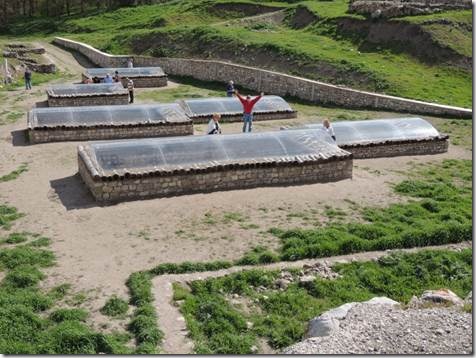
Where’s Randal! |
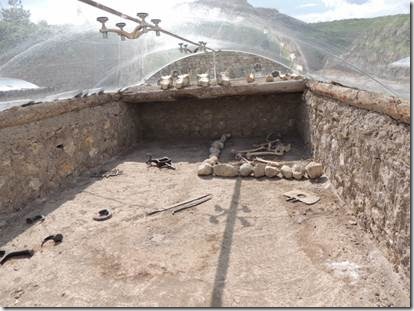
Graves of Early Bronze Age |
| The small museum had well displayed exhibits; I like the pottery the best. |
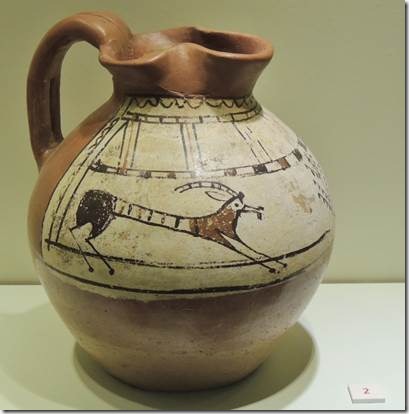 |
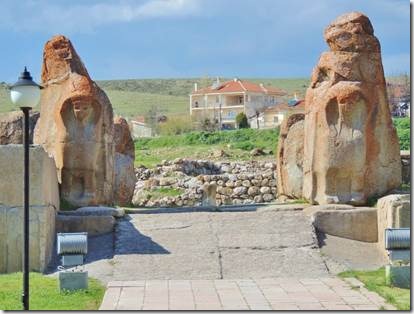
When you widen the scene it gets surreal with the ancient and present side by side. With the house in the photo the Sphinx Gate just becomes an artifact. In the first photo you feel as if time stopped in the tage of the Hittites. Can you imagine living so close to something so ancient? What a great place to play as a kid. I would have loved that. |
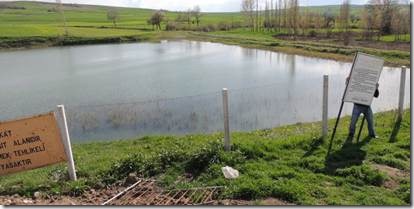
The sign for the dam had fallen down so Taṣ stood it back up! Bronze Age Dam Irrigates Modern Farms Bible and archaeology news Noah Wiener • 11/07/2012 “This Bronze Age dam at Alacahöyük still irrigates modern farmland. AA photos. A 3,250-year-old Hittite dam at Alacahöyük features striking similarities to modern water management construction. Archaeologist Aykut Çınaroğlu says the dam in north-central Turkey was built for irrigation and drinking water, and the dam’s clean water is still used by local farmers today. Hittite tablets indicate that it was built under the reign of King Hattushili III or his son Tudhaliya IV in the 13th century B.C.E. and was dedicated to the goddess Hepat. Like other Hittite dams, the large clay construction was built by hand during a period of drought and famine in Late Bronze Age Anatolia, recorded in the historical record by documentation of the importation of wheat from Egypt and evinced by dendrochronological archaeological evidence. However, unlike its contemporaries, the water source for the Alacahöyük dam is located inside the dam’s reservoir, and as a result, it hasn’t run dry over the course of the past three millennia. Professor Çınaroğlu told the Turkish paper Hurriyet Daily News that “The dam had been used to provide water for animals for thousands of years. Analyses have shown that its water is very clean. It could even be sold under the name Hittite water.” http://www.biblicalarchaeology.org/daily/news/bronze-age-dam-irrigates-modern-farms/ |
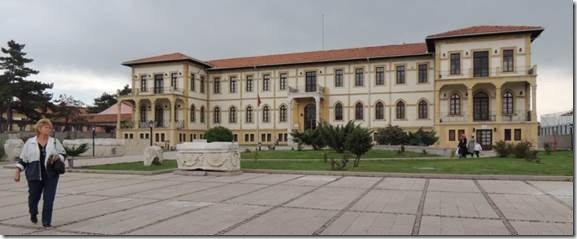
Gwen standing outside the Çorum Museum We only had a short time to visit the museum before it closed at 5 pm. |
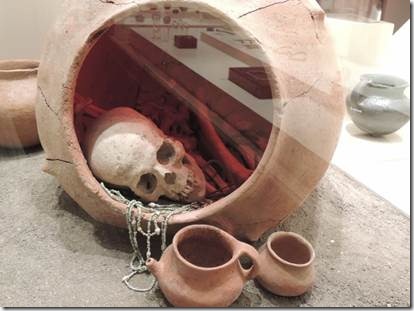
|
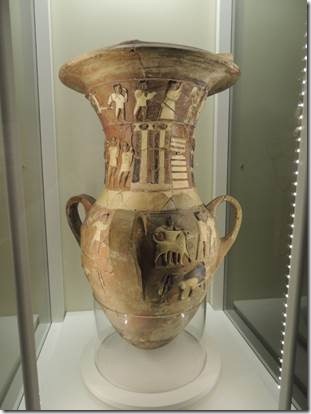 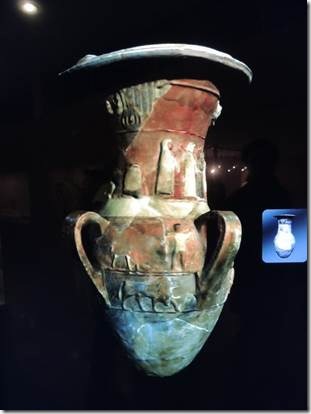
Big Vase with reliefs 1650 B.C. I loved the blue color on this vase |
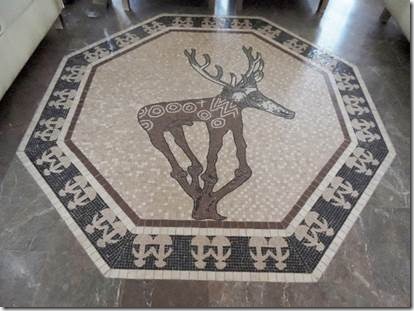
A mosaic in the museum lobby |
| The weather had begun to change and it was just starting to drizzle when we got back onto the minibus for our drive to Amasya. But the weather gods had been kind during the day so that was good as the forecast had been for rain on and off all day. |
| Next trip emails will be about Amasya, a place Randal and I both loved. |

